With successive weather fronts blowing in from the Atlantic, flexibility and a functioning sense of humour were just enough to bring success when the Urbantrout team visited northern Manchester’s river systems last weekend.
Starting our campaign on one of those classically post-industrial Calder tributaries, we indulged our passion for urban exploration to find bruiser trout sipping down midge and stonefly hatches with fastidious delicacy that was totally deceptive until the hook went home…
… and they decided to pull back!
Over ginger cake and Kelly kettle tea (maybe there’s a biofuel use for last year’s Japanese knotweed after all?) we also had the pleasure of catching up with Calder & Colne Rivers Trust director Ian Oates and his plans for fish passage on many more of the river’s massive weirs.
Very encouragingly for other river restoration groups with similar challenges, the Trust has already achieved almost-total eradication of floating pennywort in its catchments by means of a strict regime of glyphosate spraying and careful hand-clearance.
Whilst our waders and boots dried in front of a roaring log fire, overnight rain took its toll on the region’s rivers. The upper Irwell was already coloured and rising by the time we reached Nuttall Park on Sunday morning, but Duncan managed to feed a streamer to a solid 2-pounder before we voted unanimously on a return to the Tame.
Slightly rain-shadowed by Lancashire and the western Pennines, the chosen reach of our third river was still running clear enough for the trout to see a blanket hatch of large dark olives through the grey-out under the cloud base (the calendar says May, but the bugs and dominant weather patterns are still a couple of months behind).
Our verdict? It’s still mostly filthy cold and wet out there, but chasing the hatches on our recovering urban rivers has never been so much fun…
Are you using Trout in Dirty Places as your guide to exploring and fishing your own selection of urban rivers this season?
If you do, contact us afterwards and let us know how you got on!
(Photos 2, 4, 5, 6: Duncan Soar. Photo 7: Adrian Grose-Hodge)
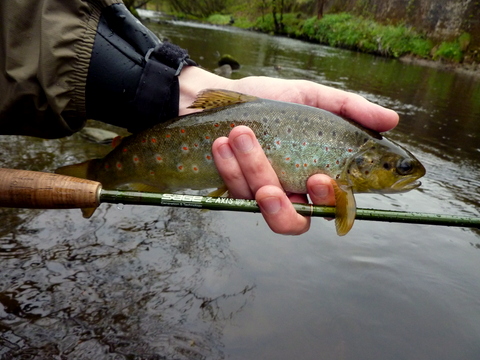
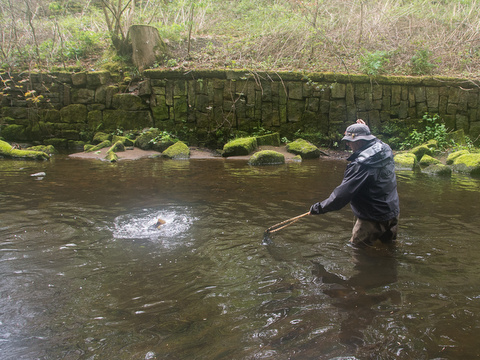
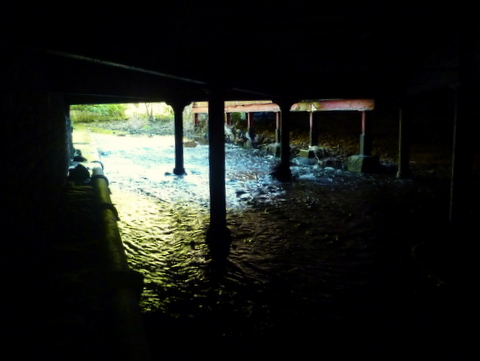
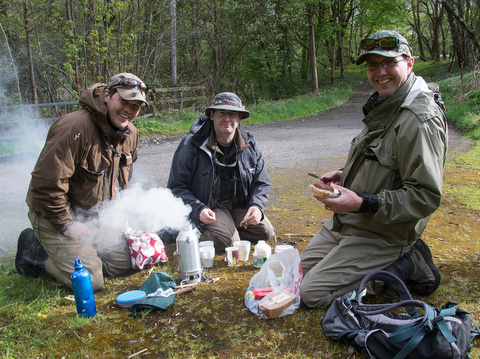
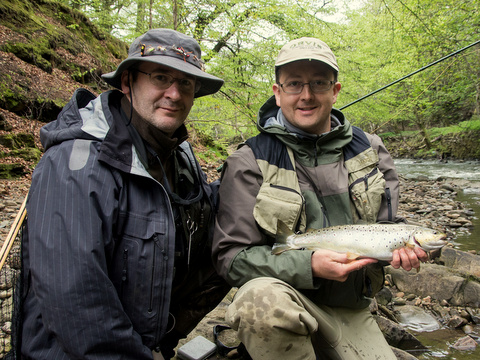
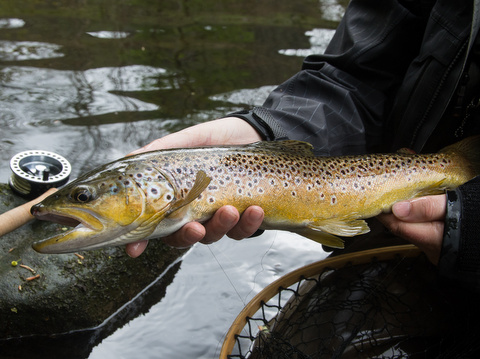
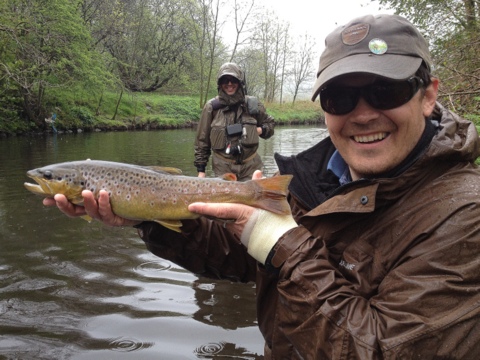
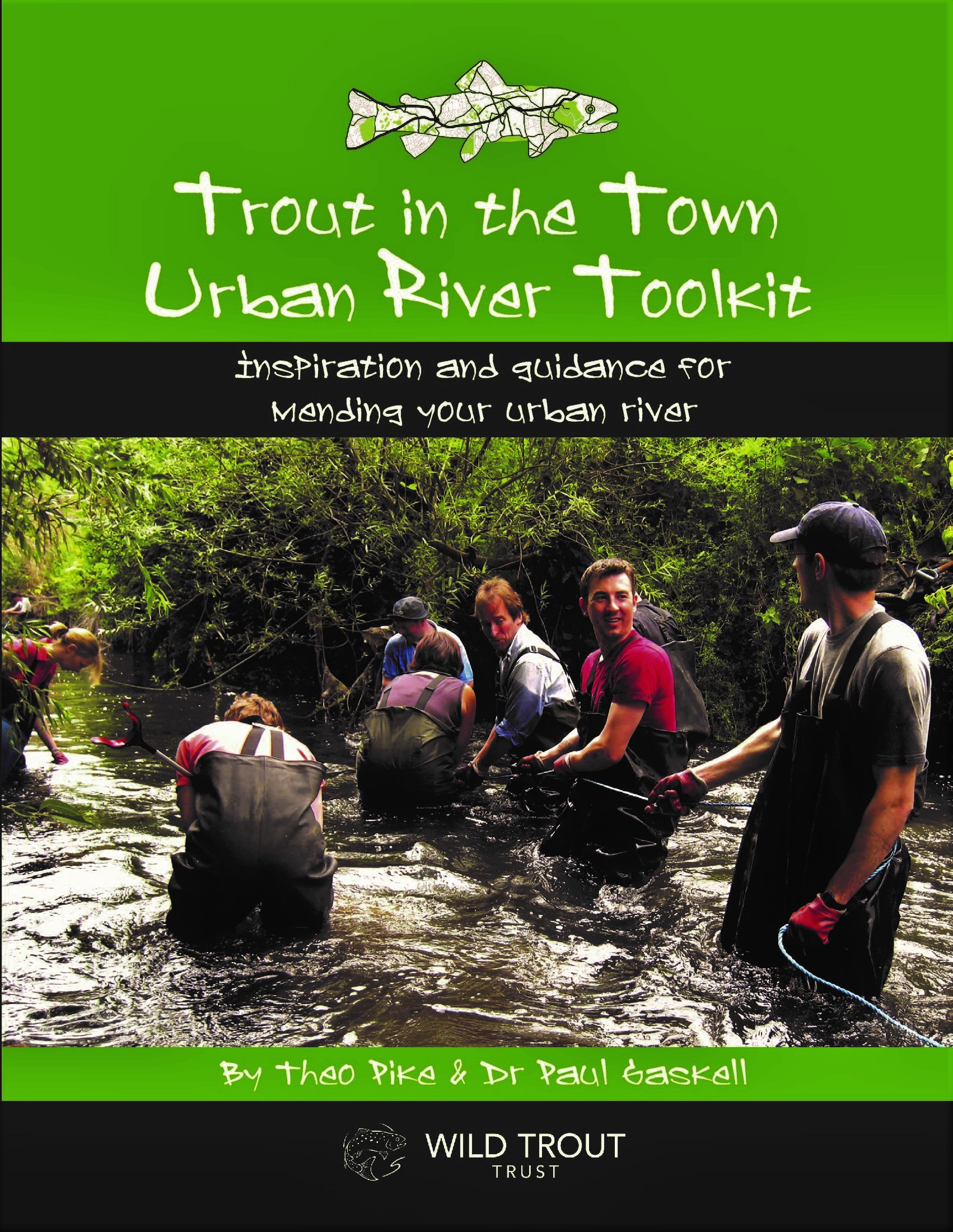
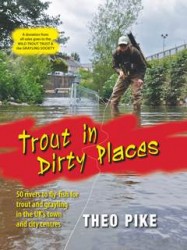
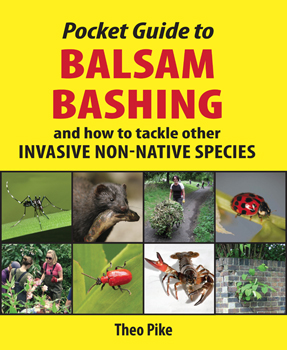
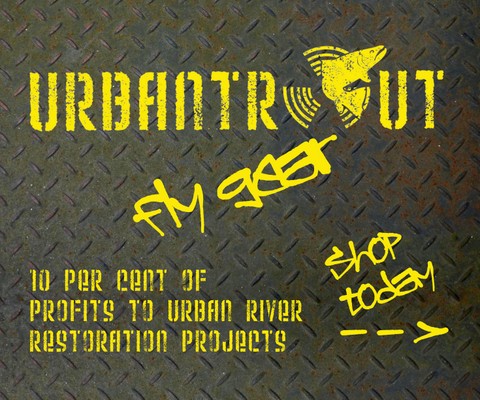
I love the book trout in dirty places and currently fish the river Tame quite successfully, but lower down than in your book, south of roaches lock and down to Heyrod.
Most fish are of the half to three quarter of a pound size, I have caught some of over a pound.
Great hatches of upright olives throughout the day, and catching on small olives, griffiths gnat, deer hair sedge all on size 16/18.
I even had one under the bridge in Stalybridge, next to the public tip!
I have also now had a couple using a tenkara uk rod, one with a red sedge, the other with a kebari.
Looking forward to reading next edition!!!
Jerry slater
Jerry, I’m delighted you’ve enjoyed Trout in Dirty Places, and very glad to hear you’re exploring the Tame.
Quite literally, the upper reaches I featured in the book (mostly because they’re actively looked after by Saddleworth AS, who deserve vast amounts of credit for their hard work over many years) are just the start. Although the sewage treatment works down the river have a reputation for misbehaving, I think they may also add some nutrients when the misbehaviour isn’t excessive, so the river’s fish biomass potential may actually be enhanced beyond its natural millstone grit nutrient level (although even this contains more calcium than eg granite geology) as you work downstream.
There are definitely good trout in there, all the more fun on light dry fly or tenkara tackle… keep us posted and maybe I’ll even see you on the bank in Stalybridge or Mossley sometime!
How far downstream on the Tame would fly fishing be an effective method for trout and at what point does the river start to support a primarily coarse population of fish species? I have had some great catches on the dry fly on the same reaches Jerry describes but I’ve been wondering where else I could go on the Tame for trout further downstream.
Hi Tom – I’m afraid I’m only properly familiar with the upper reaches, so really can’t answer that one with much accuracy. If I had time, I’d start where the Tame meets the Goyt to form the Mersey at Stockport, progressively working upstream with a dry fly and / or streamer rig, session by session and according to conditions, to see what I bumped into. However, I know I know less than others in the area: Manchester readers of Urbantrout, the floor is yours!
(On the other hand, I’d implore you not to discount the fun you can also have targeting coarse species on the fly: my pal Dominic Garnett’s book on this subject is quite inspirational, and may open your eyes to the ways that coarse species can be just as challenging and rewarding as trout by this method. Check out http://www.merlinunwin.co.uk/bookDetails.asp?bookId=133&categoryId=6 and http://dgfishtales.blogspot.co.uk/ for much more).
Above all, let us know how you get on!
Theo